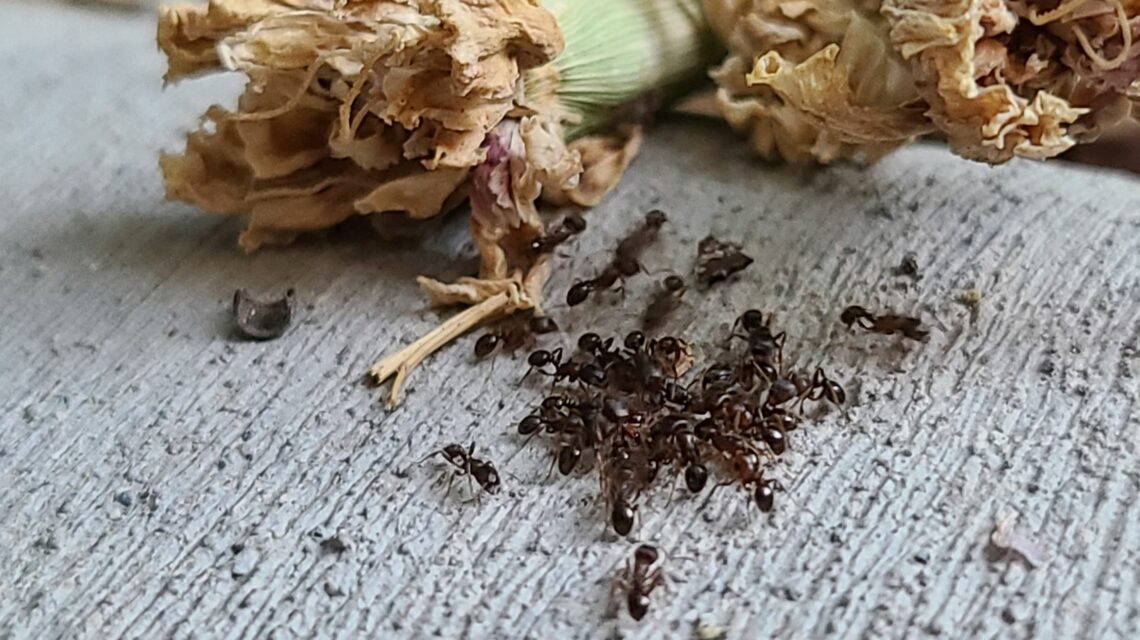Nothing is more frustrating than a colony of ants moving into your home. Some ant species are more difficult to get rid of than others, and each requires a different treatment process, so it’s no surprise that ants can seem unstoppable when they invade your home.
Read on to learn how to identify common ants in Utah and how to prevent them from invading your home.
Ant colonies build intricate tunnels and compartments for their young; this is necessary because their colonies increase by the millions each year. The colony also sends out scouts to search for food. These scouts will travel hundreds of feet to find new food sources and can lift three times their body weight.
Thousands of ant species exist, but only five types are commonly seen in Utah:
Carpenter Ant Identification, Behavior, and Diet
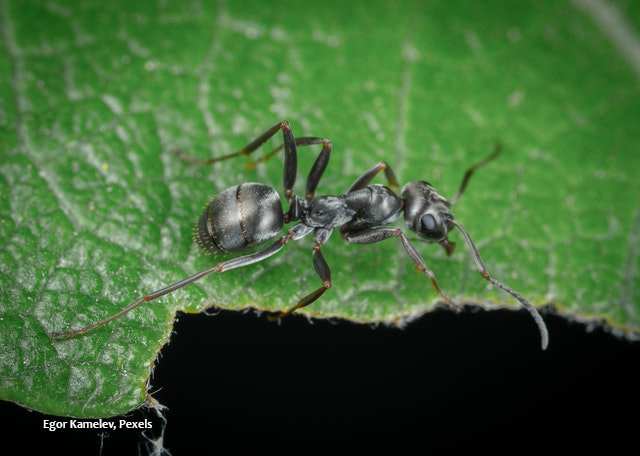

Carpenter ants are the largest type of ant you’ll encounter in Utah. They can be black, brown, or red. Some have a subtle striped pattern on their abdomen. A unique behavior of carpenter ants is that they tend to build their nests in decaying, damp wood.
You’ll often see sawdust near their nests because they don’t eat the wood they nest in—they instead scavenge for dead insects and honeydew. Honeydew is usually produced by aphids and other pests that feed on foliage, so if you’re seeing carpenter ants on your plants, you probably have an aphid infestation too.
Like all ants, most carpenter ants live in colonies with a queen that lays eggs. However, some carpenter ants create secondary colonies nearby the parent colony. These secondary colonies have no queen or larvae, but they can still damage your home if they choose to nest indoors.
Thankfully, carpenter ants tend to keep their nests outside in woodpiles or rotting stumps. Sometimes, though, they are drawn inside by flood-damaged, decaying wood.
How to Eliminate and Prevent Carpenter Ants
An extensive treatment process is often necessary to get rid of carpenter ants. Stewart’s pest control experts usually fog the structure, apply a crack/crevice spray, and spray the baseboards and the outside to get rid of carpenter ants in our pest control program. However, for deep infestations in walls, it is sometimes necessary to drill into the wall and fog inside it.
To prevent carpenter ants from invading, keep wood piles elevated (if possible) and away from your home. You should also seal up possible entry points at the base of your home and quickly fix any roof or pipe leaks. This should prevent carpenter ants from being attracted to wet, damaged wood in your walls.
Field Ant Identification, Behavior, and Diet
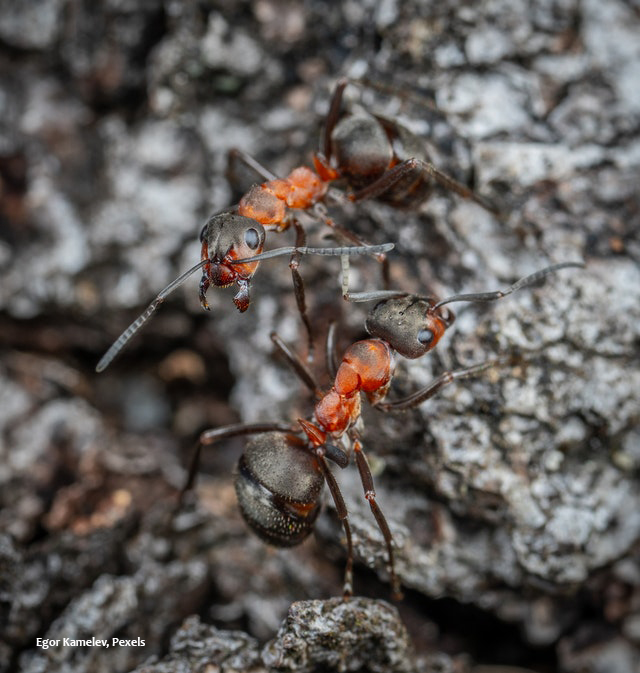

Field ants are either black, brown, or red. They create small ant hills in fields and sometimes in sheltered areas—like under thick mulch or shrubs. If the nest is threatened, field ants will swarm and attack, so be careful where you step!
Field ants are usually found outdoors and are sometimes mistaken for carpenter ants, but they don’t go inside homes as often as carpenter ants do. You’ll usually see them nesting outside in sandy soil, scavenging for a variety of foods. Similar to carpenter ants, field ants tend to feed on honeydew and insects.
How to Eliminate and Prevent Field Ants
Field ants can be eliminated with pest control sprays or ant bait boxes. Locate their nests and place control measures nearby for the best results. You should also try to eliminate the queen ant to prevent the colony from returning in the future. Prevention practices for field ants are similar to those used to prevent carpenter ants, with some additions:
- Place woodpiles far away from the home
- Keep shrubs well-trimmed—especially if they are close to the house
- Don’t place mulch too close to the home’s foundation
Harvester Ant Identification, Behavior, and Diet
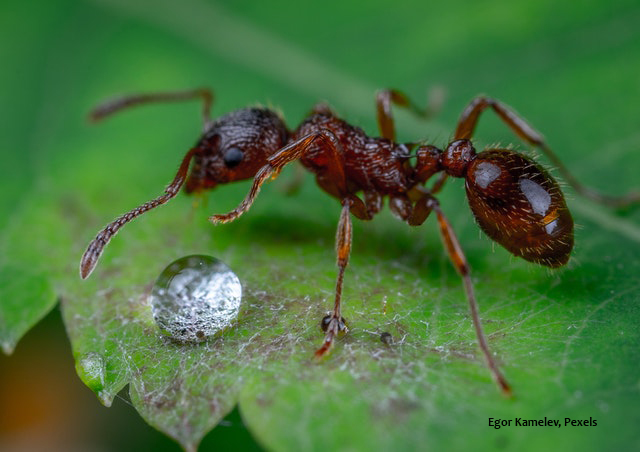

Harvester ants build ground nests with intricate tunnel systems, and their nests are only noticeable by the mounds of dirt left at the surface. They clear away vegetation around the nest and usually eat dead insects and seeds from the plants nearby.
These ants tend to stay in lawns and flowerbeds—they don’t often enter homes. Interestingly, harvester ants can be beneficial to the soil because they mix the different dirt layers together while tunneling, which aerates the soil.
This type of ant is small (compared to carpenter ants) and reddish-brown. Try not to disturb harvester ants—they’re known for their painful bites.
How to Prevent and Eliminate Harvester Ants
You can treat harvester ant hills with insect control sprays during the day while they’re less active, but ant bait stations may be a better option. Harvester ants will take the bait into the anthill to share with the colony. If the queen consumes the bait, the colony cannot survive for long.
The best way to prevent harvester ants is to keep your home tidy and crumb-free. You can also use preventative pest control sprays to deter them from your home. However, because they can be beneficial for the soil, you may prefer to leave their nests alone as long as they stay far away from your home.
Pavement Ant Identification, Behavior, and Diet
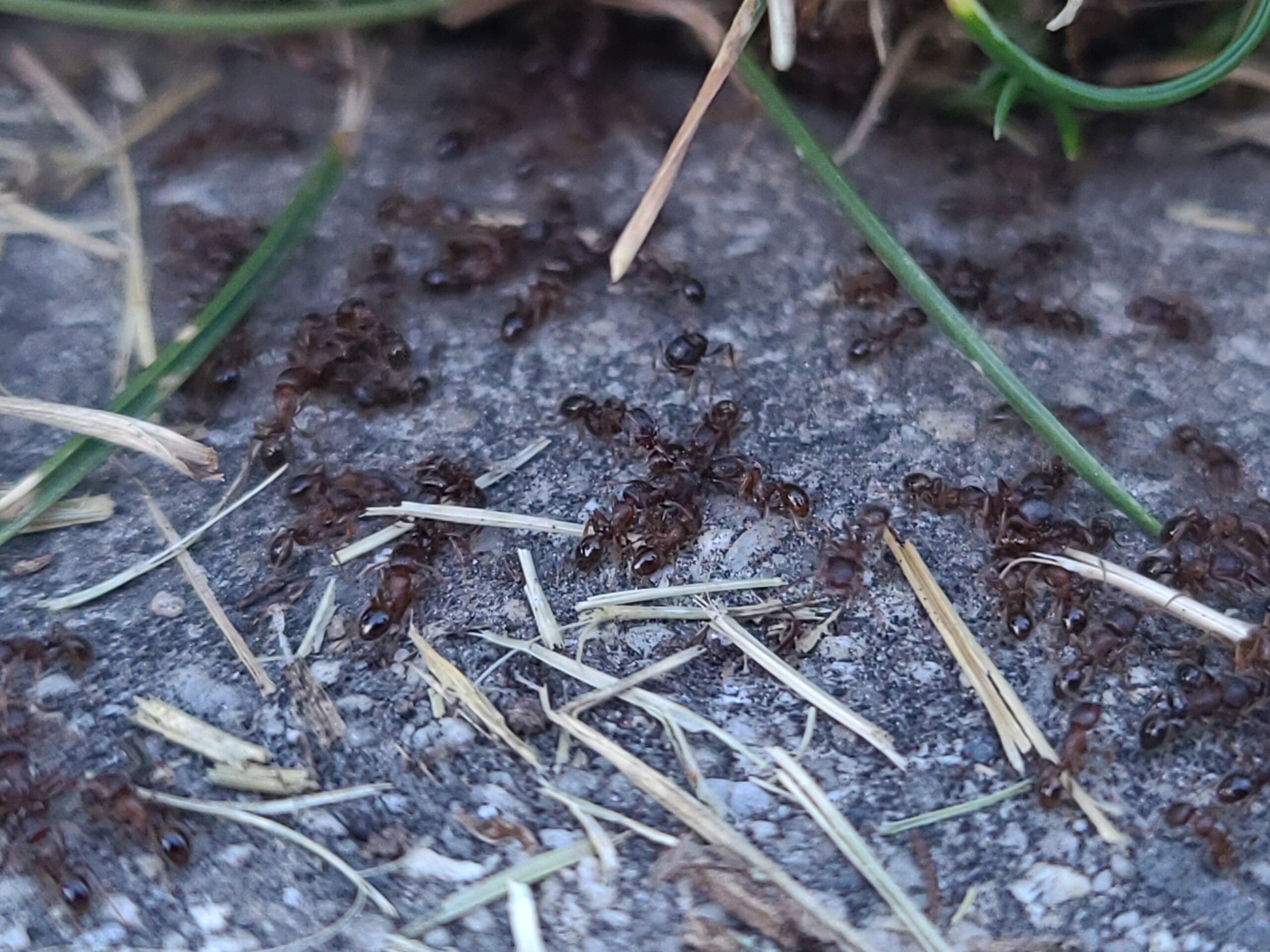

Pavement ants are common house pests because they move inside when the weather gets cold. They are attracted to greasy, sweet, and starchy foods in addition to moisture, so even in the summer they often terrorize homes (especially ones where they detect standing water). Inside, they usually build their nests near a heat source, but outside, they build nests by sidewalks or rocks.
This type of ant is small and black with pale-colored legs and antennae. Because pavement ants can bite, you’ll likely want to eliminate them from your home as soon as possible.
How to Prevent and Eliminate Pavement Ants
A high-quality insect control spray is generally effective when treating pavement ants, but it works best as a preventative measure around the outside of your home. Other reliable prevention tips are to clean up crumbs and reduce places where water sometimes collects.
To treat infestations inside your home, you can place small bait boxes in areas where you see ants, or you can use an insect control spray designed for indoor ant extermination. Either method should effectively eliminate the infestation.
Pharaoh Ant Identification, Behavior, and Diet
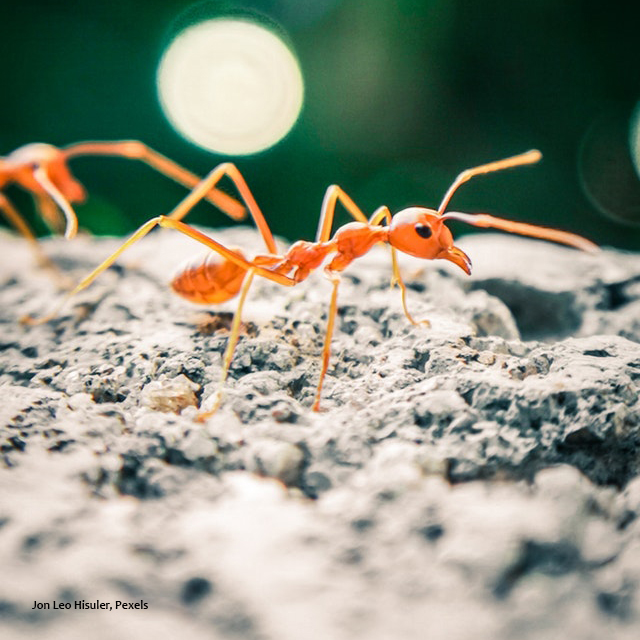

In Utah, people find pharaoh ants inside homes more than any other type of ant. They are small, reddish-yellow, and some (only the queen and males) have wings. Pharaoh ants can cause a lot of problems in homes because they will eat anything from dead insects to grease and dog food.
Though they prefer warm areas, pharaoh ants can build nests almost anywhere and have been known to invade hospitals, where they sometimes feed on open wounds and contaminate medical equipment.
How to Prevent and Eliminate Pharaoh Ants
Because pharaoh ants create a pheromone trail to help them return home, they can detect insect control sprays that intersect their trail. When this happens, instead of returning to their nest, they will start a new colony elsewhere. For this reason, bait (rather than a spray) is the best way to eliminate the whole group of ants.
This works because scavenging ants will take the bait back to share with the colony, completely eliminating the infestation.
Stewart’s pest control technicians can identify the type of ants that are invading your home and create a treatment approach to effectively eliminate the pests from your property. Call or text us at 801-226-2261 for a free bug barrier program quote today!



